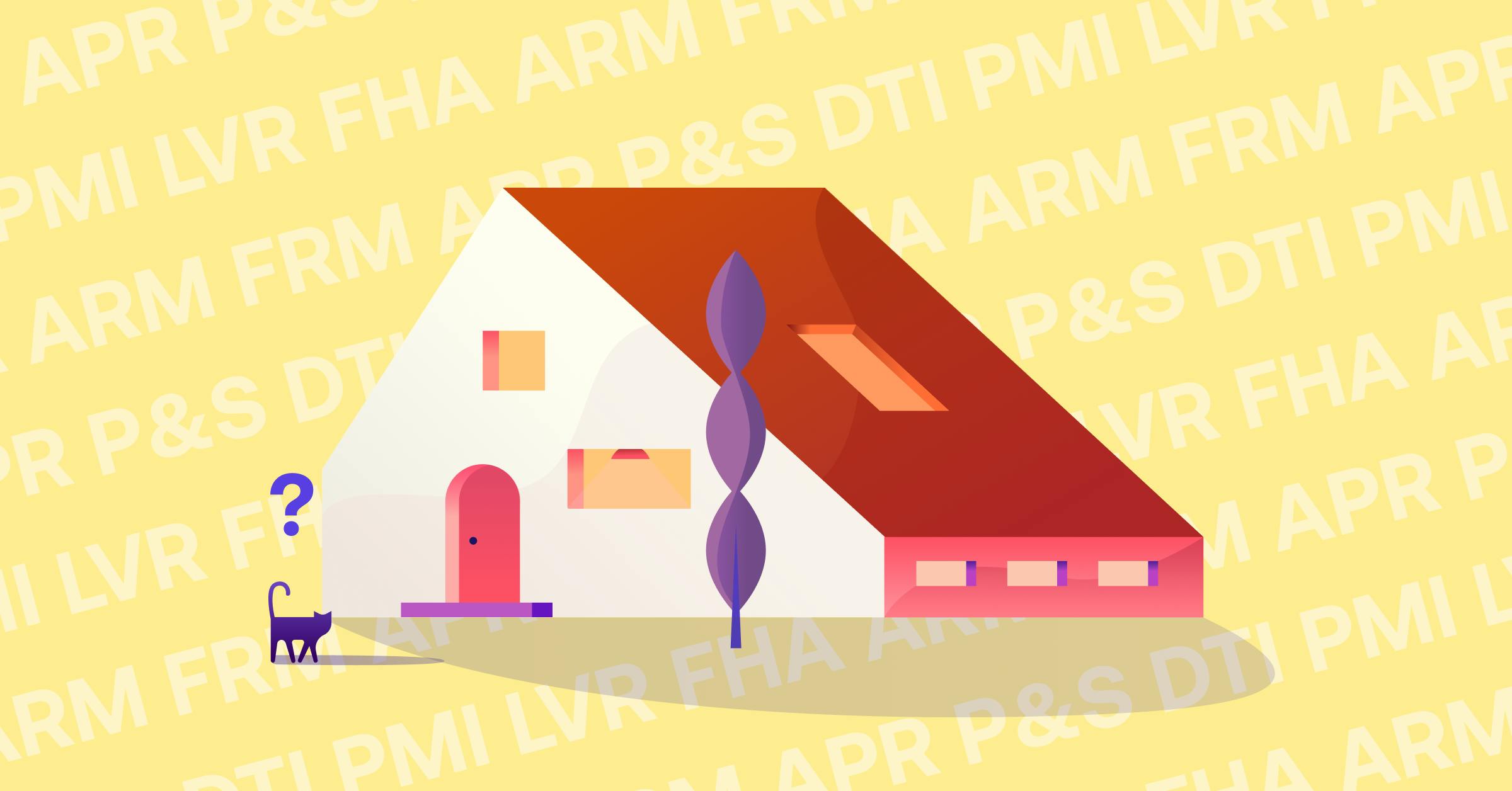WTF is with all the home loan acronyms?


Posted by Kelly
Mon 29 June 2020
Let’s break them down.
PMI: Private Mortgage Insurance
This is insurance you pay to protect the lender if you stop making payments on your loan. You’ll usually pay it as part of your monthly home loan payment. Basically, it gives lenders peace of mind.
Lots of lenders require PMI if your down payment is less than 20% of the property price.
The good news is, once the equity in your home gets above 20% you probably won’t have to pay PMI anymore.
PMI is also sometimes referred to as, you guessed it, another acronym — LMI.
LVR: Loan to value ratio
As the name suggests, this deals with the value of your home and your loan amount.
Essentially, it’s the amount you are borrowing represented as a percentage of the value of the property being used to secure the loan. Still with us?
Check out this calculation: if you have a home worth 300k, and you want to borrow 250k, your LVR would be 83%. (Divide the home loan amount by the home’s value and multiply by 100).
So, why is it important?
Well, lenders take into account the LVR when figuring out if you’ll be able to comfortably pay back the loan.
It’s also used to figure out your down payment — lenders usually work on a maximum LVR of 80%, which means you need to bring 20% of the loan amount to the party (your down payment). It’s worth pointing out though, that 20% is far from the standard, it’s actually much lower.
FHA Loan: Federal Housing Administration Loan
If you don’t think you’ll be able to save a down payment in this lifetime, you’re going to want to acquaint yourself with an FHA Loan.
Designed for low to moderate income borrowers, an FHA loan has lower down payment and FICO score requirements than conventional loans.
We’re talking as little as 3.5% down and a FICO score of 580. You can apply with a FICO of 500 to 579, you’ll just need to have a 10% down payment.
ARM: Adjustable rate mortgage
An adjustable rate loan will have an initial period where the rate is fixed, after which it will change for the life of the loan and oftentimes, your payment can go up. It can go down too. So for example, if you take a 7/1 ARM, your rate stays the same for 7 years, then adjusts with the market every year for the remaining 23 ( 7 + 23 = 30).
Most ARMs will start at a lower interest rate than fixed-rate home loans. But most people will sell or refi within 10 years, so don’t be too quick to rule out an ARM if you think you might be going that way.
There are caps on the amount the interest rates can go up, but buyers need to make sure they can afford payments if rates are at the maximum cap level.
FRM: Fixed rate mortgage
A fixed-rate home loan has a fixed interest rate for the life of the loan.
The beauty of this is, you know what your payment will be every month, and you’re protected from those pesky market fluctuations.
Just on that — the market could actually send interest rates lower than your fixed rate, so you’ll need to be cool with that.
Fixed-rate home loans are popular with buyers who are looking to hold their property long-term, or people who get off on predictability.
APR: Annual percentage rate
Lots of people think their interest rate and their APR are the same thing. Nope.
Essentially, your annual percentage rate tells you the ‘price’ of your home loan each year.
APRs are different to interest rates because they include interest costs and any other loan fees. The best use of the APR for a borrower is to compare loan offers. If a borrower has two loan offers with the same interest rate, but one APR is higher than the other, the higher APR offer is charging more in closing costs than the lower APR offer.
P&S Agreement: Purchase and sale agreement
Having a purchase and sale agreement in your hot little hands is super exciting. Okay, maybe 10% terrifying but mostly, all the good feelings.
Basically, it’s the legal contract between the buyer and seller that outlines the terms of the sale and includes the conditions that must be met for the sale to go through.
You realtor will generally guide you through it, but as with anything legal, take the time to read the fine print.
DTI: Debt to income
This compares your monthly loan installment costs to your gross income for that month to give you an idea of what percentage of your overall income you’ll need to fork out to pay off your loan.
If you were back in high school math class here, the formula would look something like this:
DTI = Total monthly home loan payments/Gross monthly income x 100
Some lenders won’t let buyers with a DTI ratio above a certain percentage borrow from them as they don’t think there’s a good balance between debt and income.
Subscribe for updates. We won’t spam you, we hate that stuff.
Picking up what we're putting down?
You're just a cruisy 15 minutes away from knowing exactly where you stand.


